History Is Not There To Be Liked: On Historical Memory, Real And Fake – OpEd
By Published by the Foreign Policy Research Institute
By Jason Steinhauer*
(FPRI) — My grandmother had an excellent memory. We would sit at her kitchen table in Montreal, in the home my mother grew up in, and she would describe her childhood in Poland 70 years earlier. She lived in Gorzków, 50 miles from the Ukraine border, and her father owned a lumberyard in Krasnobród. He traveled there each week by horse and buggy, passing the goyische cemetery on his way. Non-Jews lived on the outskirts of Gorzków; Jewish families lived around the main square. It was a bustling place, my grandmother recalled. “It was a city!” she said.
Years later, my parents visited Gorzków. To their surprise, they found three or four streets, all of them too narrow for two-lane traffic. There was a town square, but not a city center. Fewer people lived in Gorzkówthan in an apartment building in Manhattan. This was the “city” my grandmother remembered? My parents returned to Montreal and showed my grandmother the photos. She didn’t believe them. “That’s not Gorzków!” she yelled. “You didn’t see Gorzków!” Though my grandmother swore that Gorzków was a city, we had to tell her it was not. How dare we, people who had not lived there, tell her that her memory was incorrect? We had attacked something deeply personal, and that she knew and felt with great certainty. It’s not hard to understand why this upset her.
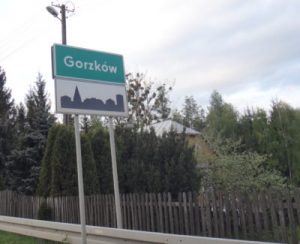
Historians have the uncomfortable role of shattering people’s memories. One of the societal roles of the historian is to differentiate between memory and history, and to tell people that Gorzkow, by no acceptable definition, was a city. It was—and still is—a village. Such precision relies upon having terminologies and definitions for things. For example, the concept of a city and a definition of what constitutes it. Occasionally definitions shift, and historians have to adjust. Prior to the 1940s, there was no term and definition for the deliberate mass killing of a specific ethnic group. Then, the word “genocide” was created. The term provided a new definition for the Holocaust, and was ascribed to events that occurred prior to the word’s existence yet fit the definition, such as the mass murder of Armenians during World War I. The difficulty is not inventing the term. The difficulty is getting people to accept it.
The Turkish government has denied the term genocide ever since it was ascribed. It goes against how they remember 1915—or how they’d prefer to remember it. Some deny the genocide occurred. Others argue that if it did occur, it was retribution for the deaths of Turkish Muslims during the Balkan Wars three years earlier. No one alive in Turkey today participated in these events, yet they do not wish to admit what their ancestors did. If they did carry out genocide, then it was not as bad as claimed. And even if it was, there was violence on both sides.
The phrase “both sides” should ring familiar to us now. It is a defensive phrase, one used, perhaps, by a teacher breaking up a schoolyard fight and, in trying to spare one child from being blamed and growing upset, blames both. But history is upsetting. Feelings do get hurt. The past reveals many cruel and ugly things about ourselves and our ancestors that we may not wish to know. When an emerging consensus unsettles what we know and feel with certainty, we may revert to “both sides.” There are always victims on both sides.
Many individuals living in the southern United States today have learned about the Civil War and the Confederacy from the side of victimhood. They did not live through the war, but they have inherited memories of it from their communities, from books and movies, or from elementary school. They have memories of Confederate flags in their homes and dorm rooms. They remember seeing Confederate flags on flagpoles, outside churches, and on state buildings. They remember seeing (and still do) memorials to Confederate soldiers on streets and in public spaces. These memories as children built identities as adults. The Confederacy was not associated with slavery; it was associated with home. How dare anyone say differently?
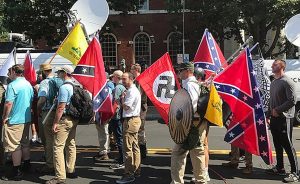
Yet, another side of America understands Confederate iconography to be symbols of dark times in the American past. Though none of these Americans grew up during the period of slavery, and fewer and fewer actively remember segregation, the monuments remind us that these institutions were real. It is a fact that starting in 1619 people from Africa were brought to the United States to be slave laborers. It is a fact that these hundreds of thousands of people were not afforded the same rights as their owners. It is a fact that millions of human beings lived and died, often brutally, being owned by another human being. It is a fact that the enslaved did not possess an ability to live a life of their own choosing or pass a free life onto their children. It is a fact that this contradiction between the aspirational ideas of equality that founded the United States and the reality that kept certain men and women enslaved was a source of friction since our nation’s beginning. It is a fact that by 1860 the tension had grown so volatile that half of the nation seceded from the other, and a war was fought to determine whether it would reunite or be permanently separated. At best, Confederate memorials are nostalgia for a period when to see one class of citizens as inferior to another was a legitimate foundation for a new country. At worst, they are aspirations to return to those times.
A poll in August 2017 found that 62 percent of Americans support keeping Confederate statues. For some, this support may be another manifestation of victimhood, a fear that something else is being taken away by societal forces beyond their control. In the past fifteen years, many Americans have lost homes due to the housing collapse, lost jobs due to outsourcing, lost savings due to the Great Recession, and lost sense of self-worth due to all of the aforementioned. Statues are all they have left. For others, it may simply be a failure of imagination: they can’t imagine, or perhaps fear to imagine, what may be erected in their place. For some, it is a political fight, a battle of red states versus blues states. And for some, it is an expression of something more sinister. Those who encircled a Robert E. Lee statue in Charlottesville on Friday, August 11 injected the poisonous ideology of Nazism into the debate over Confederate memory. But not all Americans who wish to see Confederate statues remain are Fascists. People alive today who accept Confederate iconography did not invent the myth they cling to. They inherited it. It is a form of patrimony. It came to them as culture.
The terms “myth” and “culture” require precise definitions. A myth is a story that people tell themselves about their past. Edith Hamilton described mythology as an explanation of nature, and indeed all myths have an explanatory quality. They are stories that explain how the world came to be. Culture, as Clifford Geertz laid out, is “a system of inherited conceptions expressed in symbolic forms.” Culture is the sum of what we pass down through language, ideas, and signs. Myths explain the world. Cultures perpetuate them.
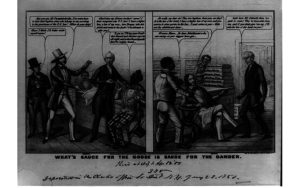
The process of myth creation and transmission began almost as soon as the Civil War ended. As has been well chronicled by many historians, almost immediately after the conclusion of the conflict, former Confederate leaders and soldiers told new stories as to why they fought, stories that differed from what they had said openly five years earlier. The Civil War was fought over slavery. The South’s economic, social, and political institutions depended on it. It underpinned an entire way of life, one that sustained large segments of the American economy and enabled white Christian land owners to attain and sustain a position of wealth, superiority, and control. It was a superiority that men were ready to die for. But after the war, Southern leaders began to tell a different story, one that eerily resembled the American Revolution. They had stood up to a stronger and mightier foe in the name of liberty, self-determination, and honor. The part of the Confederacy that had dealt with slavery, well, that was not its principal raison d’etre. Slavery had been a major city. Now, it was just a town.
Myths can have profound resonance. Historian William Hitchcock recently wrote for the Washington Post on the myth of Dwight D. Eisenhower. The story went that Eisenhower had told Korean leaders that he would use nuclear weapons against them if they did not come to the negotiating table in 1953. Except that never happened. Eisenhower’s CIA director, Allen Dulles, invented the story and told it to a journalist. It was repeated for decades, and became accepted as truth. It serves as a good creation story—the origin of presidents using the threat of nuclear weapons to shape world affairs. When repeated enough times, a myth becomes a basis for decision making.
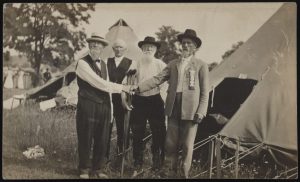
Myths are powerful. So is loss. In the decades after the Civil War, it was the children and relatives of Confederate soldiers, through organizations such as the Sons of Confederate Veterans and Ladies Memorial Associations, who erected memorials to their loved ones in cemeteries and in public squares. Their parents, brothers, sons, and spouses were killed on battlefields, mangled, and blown apart. Others returned home missing limbs, badly scarred. Confederate veterans were barred by the U.S. government from being buried in government cemeteries, so women’s groups erected hundreds of memorials to soldiers, which were manufactured in Northern factories by Northern businesses. By the turn of the 20th century, as Civil War veterans were aging, veterans on both sides called for reconciliation. Federal burial policy began to shift. In 1906, Congress authorized Confederate headstones. By 1914, Confederate headstones were treated as equals to Union headstones. It was during this period that the largest number of Confederate monuments was erected. Another crucial factor? The Supreme Court had ruled in 1896 that blacks and whites could legally be separated. Southern states reasserted their notions of social order and hierarchy through Jim Crow laws that kept blacks from exercising the rights of full citizenship. Confederate memorials were part of a reclamation of a way of life that had been slipping away.
Statues tell us more about the moments in which they are erected than they do about the figures they depict. They celebrate virtues we hold dear that are somehow embodied in the deceased, or that we have projected onto the deceased. The Marquis de Lafayette first arrived in America in 1777 to assist George Washington in the fight for independence, and he returned in 1824 with a 13-state tour and a hero’s welcome. It wasn’t until 1885, though, more than 100 years after American Independence, that a statute to Lafayette was commissioned by Congress, completed in 1891. The statute had its own statue-moving controversy; it was proposed that it replace the statue of Andrew Jackson across from the White House. A Congressman from Jackson’s home state of Tennessee objected. He stated that Jackson had a closer affiliation with the White House than George Washington, having lived there for eight years, and thus should always be in front of the president’s house. This controversy reignited in 1967 on Jackson’s 200th birthday, when it was again suggested that Jackson’s statue be replaced. Today, Jackson remains in the center of Lafayette Park. Lafayette’s statue stands in the southeast corner.
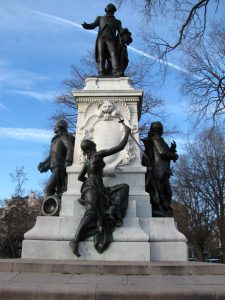
In 1891, the Washington Evening Star called Lafayette’s statue “an ideal . . . sure to produce an educational effect upon hundreds of thousands of Americans.” Today, the statue and Lafayette are hardly noticed as we snap selfies in front of 1600 Pennsylvania Avenue. Further up 16th Street is a statue to Samuel Hahnemann, the father of homeopathic medicine. The statue was erected in 1900, when homeopathy enjoyed wide popularity in the United States. President William McKinley himself dedicated the monument on June 21, 1900, fifty-seven years after Hahnemann’s death. Today, the only people who know it’s there are the homeless who sleep next to it. Probably 80 percent of Americans do not know who Lafayette was—even as more than 30 cities in the U.S. are named after him—and probably 99 percent of us know nothing about Hahnemann. There are statues all across America that have similar tales. They had profound significance to those who erected them. But societies change. Statues take on new meanings and lose their old ones. This is not something we should resist, but rather embrace. We should not fear that we are changing history. History is always changing, whether we actively participate or not.
More than 750,000 Americans died during the Civil War—and while for five years, the Confederacy was not part of America, all the men that died had, at one point, lived in the United States. They rebelled against the U.S. for the purposes of perpetuating a system of sanctioned enslavement of others, but though we may abhor the cause, we can also recognize they were human beings. We faced something similar after the Vietnam War. This particular analogy can only be taken so far, but the men and women who served in Vietnam were not viewed as heroes. Many viewed them as traitors, or complicit in war crimes and horrific violence. Yet, to honor them, in 1982, led by veterans and their families, a memorial was erected that was not a statue, but rather a series of names. The creation of the Vietnam Veterans Memorial was a watershed moment in American public memorialization. It recognized the individuals, not the cause. Today, it is the second most visited memorial in D.C. behind the Lincoln Memorial.
History deals with things that actually happened. We call these things facts. We use evidence to prove those facts and draw conclusions from them. It is a fact that after the war those who fought for secession spoke differently about why they had done so. Those who fought for the Union did as well. At the outset of the war, Northern leaders spoke of the need to preserve the Union and quash the Rebellion. By the end of the war, they spoke of a divine quest for Emancipation. Human beings do not always act rationally. We change our stories. To paraphrase historian David Hackett Fischer, individuals in the past did not merely think different things, they thought them differently. We can never rethink the thoughts of those who conceived these myths, though we can trace their evolution. Our predecessors struggled with this. We struggle with this. It is a patrimony that has been passed down to us all.
Because of what occurred in Charlottesville, many analogies have been drawn between the Confederacy and Nazi Germany. Analogies only take us so far, and often the selection of what analogy we use tells us more about our motivations than it offers any insight or course of action. Seventy years after the Civil War, the most hateful ideology ever crafted by human beings formed in Germany. This ideology was, in part, spun out of a lost war, a humiliation that must have been caused by the infectious presence of Jews and other minorities. It led to a deranged quest for racial purity that spread across an entire continent. If the Civil War was the worst period of conflict for America, World War II was the worst for humanity. Nazism led to the deaths of more than 60 million people worldwide. Nazis murdered my great-grandparents, my great-uncles, my great-aunts, and my great-cousins. They destroyed my grandmother and grandfather’s lives. They murdered the Jews of Gorzków.
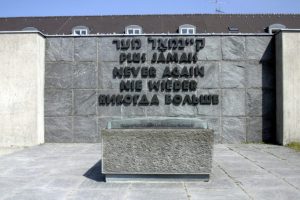
Sixteen million American men and women fought to defeat Nazism, including my grandfather. Many died doing so. I thought of them when I saw Nazis in Charlottesville. They chanted that Jews will not replace them, but in reality, we already have. We all have. A world where we believe in the rights of each human being, where we do not believe that one race is inherently superior to another, where we accept that Jews and all religions, ethnicities, races, and nationalities make up the ever-changing fabric of America. That world is here. It has replaced the world where that was untrue. The skeletal remains of concentration camps in Europe are monuments to that replacement. Perhaps our Confederate monuments can be the same. Not a testament to how things were, or what we long to return to. But testaments to what we have left behind, and how much we have grown. Testaments to how we are no longer children, and we are able to confront a difficult past and not say “both sides,” but rather say, “Never Again.” Education, a global community of humanity, a shared responsibility to affirm the rights of all human beings… it is our collective responsibility to ensure this is the patrimony we pass down to our children.
My grandmother never spoke in detail about the war years. Her eyes would well up with tears until she caught herself and gained her composure. Her tears turned to anger, and she yelled “Why! Why did they do this? Why did they hate us? We did nothing to them!” She never understood.
My grandmother insisted that Gorzków was God’s country, with the most beautiful soil in the world. When I finally visited, I saw that she was right. The hillsides were absolutely stunning: long vistas of yellow wildflowers nestled into rolling hills. High, archaic trees lined the roadways, and rays of sun beamed through clouds like spotlights from heaven. Church spires decorated the horizon. It looked like Middle Earth, and one half-expected Hobbits to pop out of hobbit-holes and feed you venison and potatoes. The region was full of apple orchards and vineyards, as elderly Polish men mowed lawns and elderly Polish women rode bicycles. It was beautiful. It pained me in a way that I can never fully describe. This was paradise for a young girl, and then one day it ended, for reasons she never understood and that historians like myself continue to try to explain. But it was not paradise. Anti-Semitism was prevalent here, and the non-Jews of Gorzków were at best indifferent and at worst complicit in the round-up and murder of my family. It was a troubling knowledge that a naive part of me wished I didn’t know. I just wanted to enjoy the beauty in front of me, and not think about the horror. But I did know, and no matter how uncomfortable it made me, I could not deny the facts. We cannot rely solely on the memories of children. History is not always there to be liked.
About the author:
*Jason Steinhauer is the inaugural director of the Lepage Center for History in the Public Interest at Villanova University and is the creator of the field of History Communication
Source:
This article was published at FPRI.

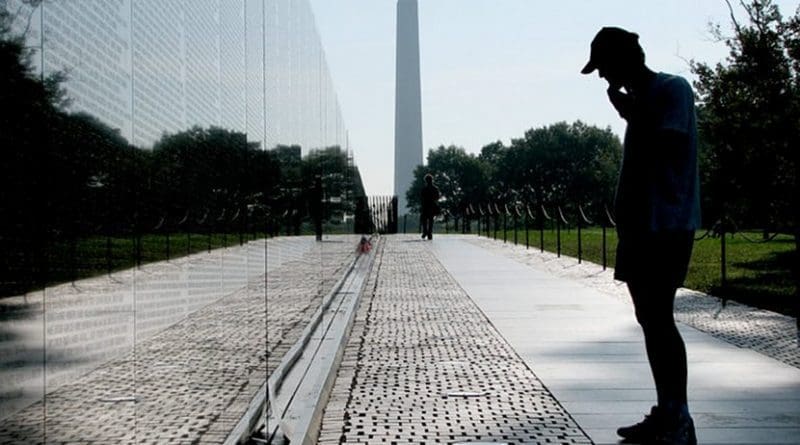
When Poland was ruled by Poles there was no genocide.